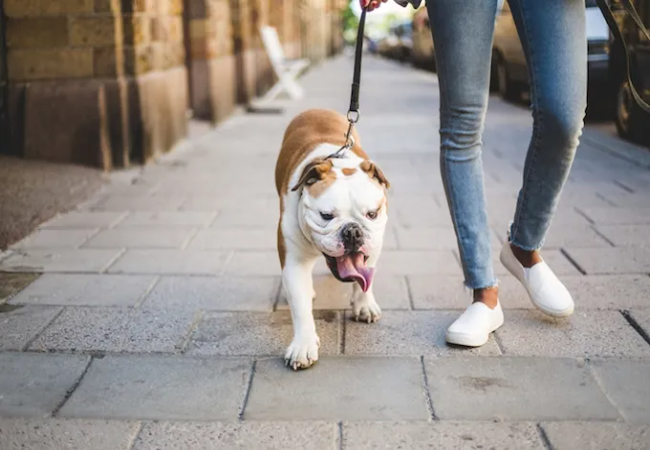Veterinary Guide to Canine Hypermetria & Dysmetria 2025 🩺🐶

In this article
Veterinary Guide to Canine Hypermetria & Dysmetria 2025 🩺🐶
By Dr. Duncan Houston BVSc
🧬 What Are Hypermetria & Dysmetria?
Dysmetria is a coordination error where a dog misjudges distance, speed, or force of a movement, leading to undershooting or overshooting targets. Hypermetria is a type of dysmetria where the dog exaggerates movement, often seen as a high-stepping or “goose-stepping” gait.
👀 Clinical Signs & Presentation
- Wide-based or high-stepping gait (“prancing”)—pronounced during turns or active movement.
- Head tremors and body sway—jerky or intentional tremors visible during movement.
- Loss of menace response—reflexive blink is missing when a finger approaches the eye.
- Nystagmus (involuntary eye movement), and head tilt in some cerebellar cases.
- Wide stance, difficulty turning, uncoordinated paw placement.
🧠 Why Do These Things Happen?
These signs point to cerebellar or cerebellar pathway dysfunction. Possible causes include:
- ✅ Cerebellar lesions
- Tumors, hemorrhages, stroke, degenerative disorders like cerebellar abiotrophy. Symmetrical hypermetria often suggests cerebellar disease.
- ✅ Genetic/congenital disorders. Dandy–Walker malformation, cerebellar hypoplasia, or abiotrophy is seen in Kerry Blue Terriers, Coton de Tulear, and Border Collies.
- ✅ Trauma or infection
- Brain trauma, encephalitis, tick-borne diseases (e.g. protozoal, rickettsial).
- ✅ Metabolic/toxic causes
- Drug toxicities (eg, metronidazole), vitamin deficiencies, other CNS diseases.
🔍 Diagnostic Approach
- Neurologic & physical exam: Evaluate gait, menace response, proprioception, and muscle tone.
- Neuro-anatomic localization: Cerebellar vs vestibular vs proprioceptive ataxia—check for head tilt, nystagmus, paresis.
- Advanced imaging: MRI or CT scans to detect tumors, lesions, and malformations.
- Laboratory testing: CBC, biochemistry, tick panels, infectious disease screens.
- Genetic testing: For hereditary cerebellar degenerations in predisposed breeds.
🛠️ Treatment & Management
1. Treat the Underlying Cause
- Surgery or medical oncology if a lesion (e.g., tumor, hemorrhage) is found.
- Discontinue toxic medications (e.g., metronidazole). Provide metabolic support.
- Manage infections (e.g., tick-borne encephalitis) with appropriate antimicrobials.
2. Supportive Care & Rehabilitation
- Cage rest to reduce fall risk during the acute phase.
- Neuro-physiotherapy: proprioceptive exercises, controlled movement drills.
- Hydrotherapy supports balance and retraining coordination.
- Assistive gear: harnesses, non-slip mats, raised food/water bowls.
3. Long-Term Neuro Support
- Rehabilitation programs: 2–3 sessions/week for 6–12 weeks.
- Repeat neuro exams and imaging at intervals if progressive.
- Genetic counseling for breeders of predisposed dogs.
📈 Prognosis & Outlook
- Depends on cause: reversible causes (infection, trauma) carry optimistic outlook; congenital/genetic conditions often remain.
- Cerebellar abiotrophy—progressive, but slower in certain breeds.
- Rehabilitation can significantly improve function, even without full recovery.
🏡 Owner Tips & Home Care
- Ensure a secure, padded environment; remove tripping hazards.
- Monitor for injury post-falls; avoid stairs, slippery floors.
- Provide consistent routines to reduce stress on neurologic reflexes.
- Encourage short, supervised exercises that challenge gait and coordination.
- Be patient—progress often slow but meaningful with consistent rehab.
📱 Ask A Vet Telehealth Integration
- Video gait assessment: Upload walk videos for remote neuro review.
- Exercise reminders: Scheduled neuro-physio prompts, tracking in the app.
- Medication alerts: Cautious tapering—e.g., corticosteroids if used for inflammatory causes.
- Follow-up tracking: Automated check-ins for progress and imaging intervals.
🎓 Case Spotlight: “Riley” the Border Collie
Riley, a 2-year-old Border Collie, developed a dramatic high-stepping gait and intention tremors after head trauma at the vet. MRI revealed a mild cerebellar hemorrhage. He had four weeks of rest with proprioceptive rehab, hydrotherapy, and harness support. At 3 months, his gait was nearly normal, and menace response returned. Continued home exercises supported full recovery—now monitored via Ask A Vet gait video uploads and rehab schedules. 🐕🎉
🔚 Key Takeaways
- Hypermetria & dysmetria indicate cerebellar dysfunction—watch for high-stepping gait and tremors.
- Timely neuro exam and imaging are essential for diagnosis and treatment.
- Treat underlying cause—if reversible, potential for marked recovery.
- Rehab & supportive care significantly enhance gait retraining and safety.
- Ask A Vet telehealth offers remote neuro assessment, tailored rehab support, and home tool delivery to boost recovery. 📱
Dr Duncan Houston BVSc, founder of Ask A Vet. Download the Ask A Vet app today for expert telehealth support in diagnosing and managing your dog’s hypermetria or dysmetria—from acute gait assessment to long-term rehab planning 🐶📲






